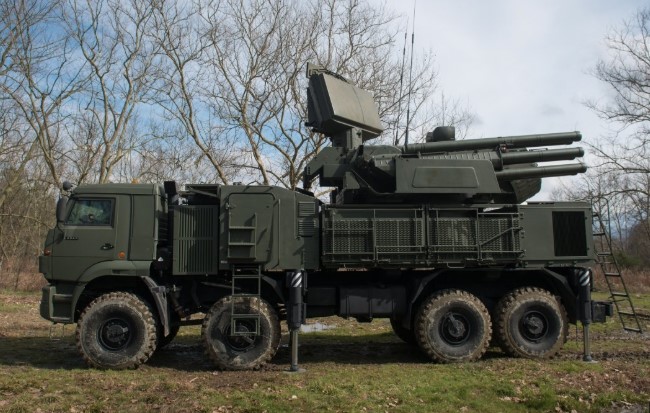China has introduced a powerful new vehicle that can shoot down drones, missiles, and other low-flying threats. This weapon is called the SWS3, although some reports refer to it as WS-3. The system has been developed to protect troops and important areas from fast-moving threats in the air.
A New Weapon to Stop Drones and Missiles
The SWS3 combines two types of weapons. First, it has twin 35mm autocannons, which are fast-firing guns. Second, it carries FB-10A short-range surface-to-air missiles. These two weapons are mounted on a wheeled armored vehicle—either with four wheels (4×4) or six wheels (6×6). This means the vehicle can move quickly and easily across roads and flat terrain.
The SWS3 is self-propelled, which means it does not need to be towed or carried. It drives itself and can go wherever it is needed. It can also work on its own, without needing support from other vehicles. This makes it highly mobile and fast to deploy in battle zones. It is especially useful in areas where quick movement is important, like on the frontlines or during fast-changing situations.
To find and follow enemy targets in the sky, the SWS3 uses a set of modern sensors. These include radar and electro-optical systems.
China’s Veiled Warning to US; WZ-9 Drone Could Detect F-35 and B-21
Advanced Sensors and Dual Weapons
The radar helps detect objects from far away, even in bad weather or at night. The electro-optical system helps the crew aim accurately using cameras and lasers. These tools work together to find threats and guide the guns and missiles to the right target.
One of the most important parts of the SWS3 is its fire control system. This system can control both the guns and the missiles at the same time. That means the vehicle can attack different kinds of targets together, such as slow-moving drones and faster cruise missiles. Using both weapons at once increases the chances of hitting targets, especially in situations where there are multiple incoming threats from different directions.
The missiles on the SWS3 are good for hitting targets that are farther away, while the autocannons are best for close-range attacks. This dual-mode attack system gives the SWS3 flexibility, making it effective against a wide range of air threats. The vehicle’s crew can quickly decide which weapon to use, depending on how fast and how far the enemy target is.
The SWS3 can also work with other defense systems. It is made to connect with bigger, layered air defense networks. These networks include radars, command centers, and other missile systems. When linked together, they can defend larger areas more effectively. This means the SWS3 is not just working alone but can be part of a bigger defense plan.
How SWS3 Compares to Russia’s Pantsir
The design of the SWS3 is similar to Russia’s Pantsir-S1, a well-known air defense system. Both systems carry guns and missiles on one vehicle and are built to shoot down aircraft and drones. However, there are some differences between the two.
One big difference is mobility. The Chinese SWS3 uses wheels instead of tracks. This makes it faster on paved roads and easier to move during rapid military operations. On the other hand, the Russian Pantsir-S1 comes in both wheeled and tracked versions. The tracked version can move better over rough ground like mud, snow, or sand but is slower than the wheeled version.
Another difference is that the SWS3 has already been deployed with light motorized infantry brigades in China’s military. These units move quickly and often need defense systems that can keep up with them. The SWS3 fits that need because of its speed and ease of movement.
Even though both systems seem similar, there is not enough public information to know exactly how the SWS3 performs in real combat. Most of the details about the SWS3 come from official Chinese sources. That means we do not yet know how it behaves during real battles or against large-scale attacks. Without field tests or independent reports, direct comparisons with the Russian Pantsir-S1 are not confirmed.
Still, the development of the SWS3 shows that China is taking steps to defend itself against modern air threats. These include drone swarms, cruise missiles, and precision-guided bombs. By creating this kind of system, China is responding to changes in modern warfare and is building tools to counter new types of threats in the air.

